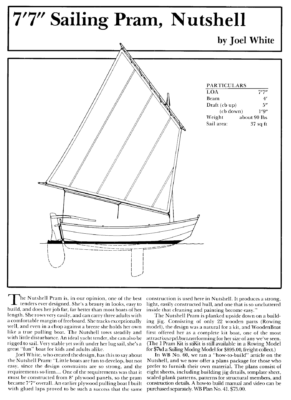
7'7" Sailing Pram, Nutshell
The original print version of this article can be viewed as a PDF or purchased from the WoodenBoat Store.
Join to view PDF Purchase 7'7" Nutshell Pram PlansThe Nutshell Sailing Pram is, in our opinion, one of the best tenders ever designed. She’s a beauty in looks, easy to build, and does her job far, far better than most boats of her length. She rows very easily, and can carry three adults with a comfortable margin of free board. She tracks exceptionally well and, even in a chop against a breeze, she holds her own like a true pulling boat.
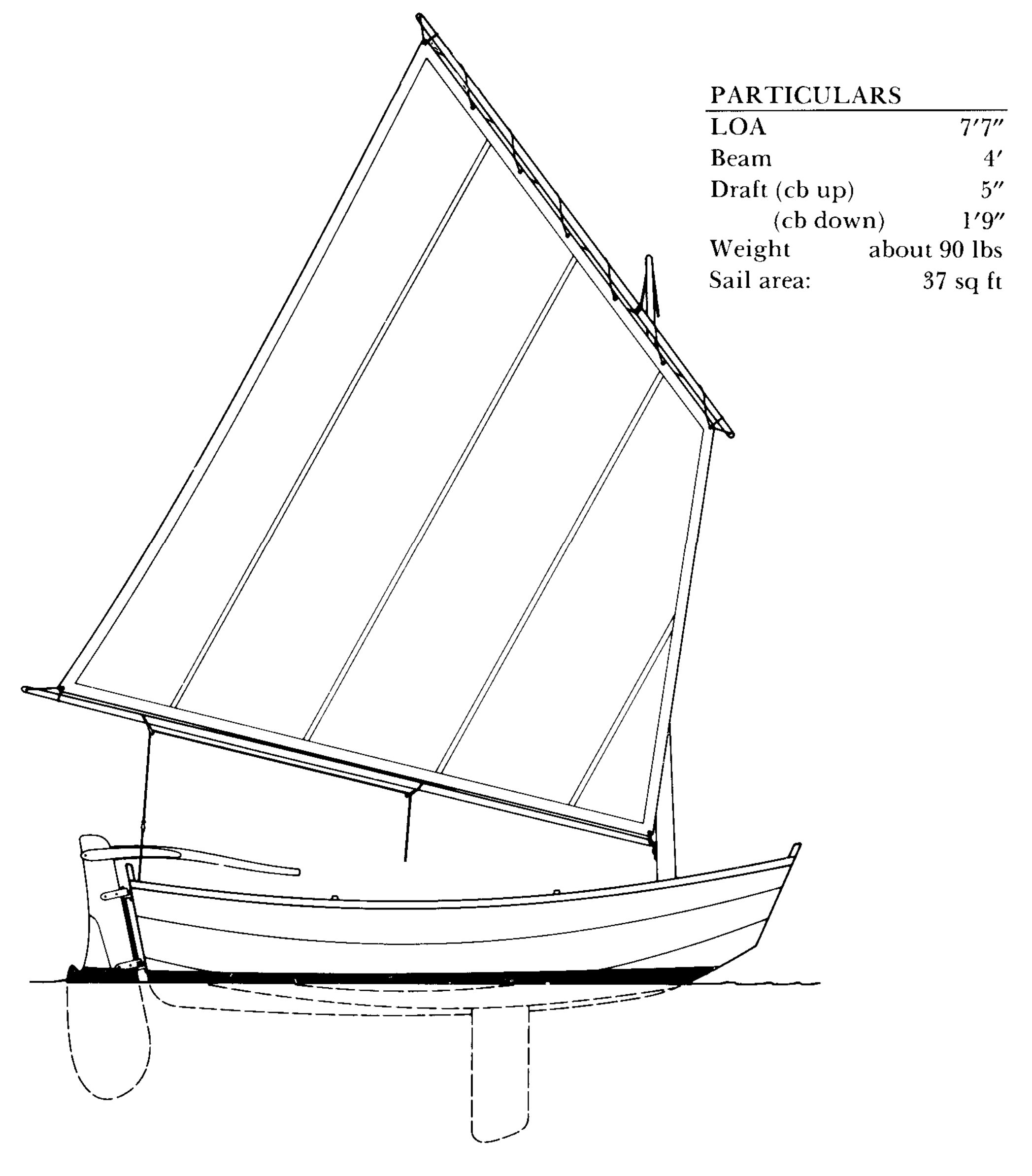
7′ 7″ Nutshell Sailing Pram Particulars
The Nutshell tows steadily and with little disturbance. An ideal yacht tender, she can also be rigged to sail. Very stable, yet swift under the lug sail, she’s a great “fun” boat for kids and adults alike.
Joel White, who created the design, has this to say about the Nutshell Pram: “Little boats are fun to develop, but not easy, since the design constraints are so strong and the requirements so firm. One of the requirements was that it must be constructed from 8’ plywood panels, so the pram became 7′ 7″ overall. An earlier plywood pulling boat I built with glued laps proved to be such a success that the same construction is used here in Nutshell. It produces a strong, light, easily constructed hull, and one that is so uncluttered inside that cleaning and painting become easy.”
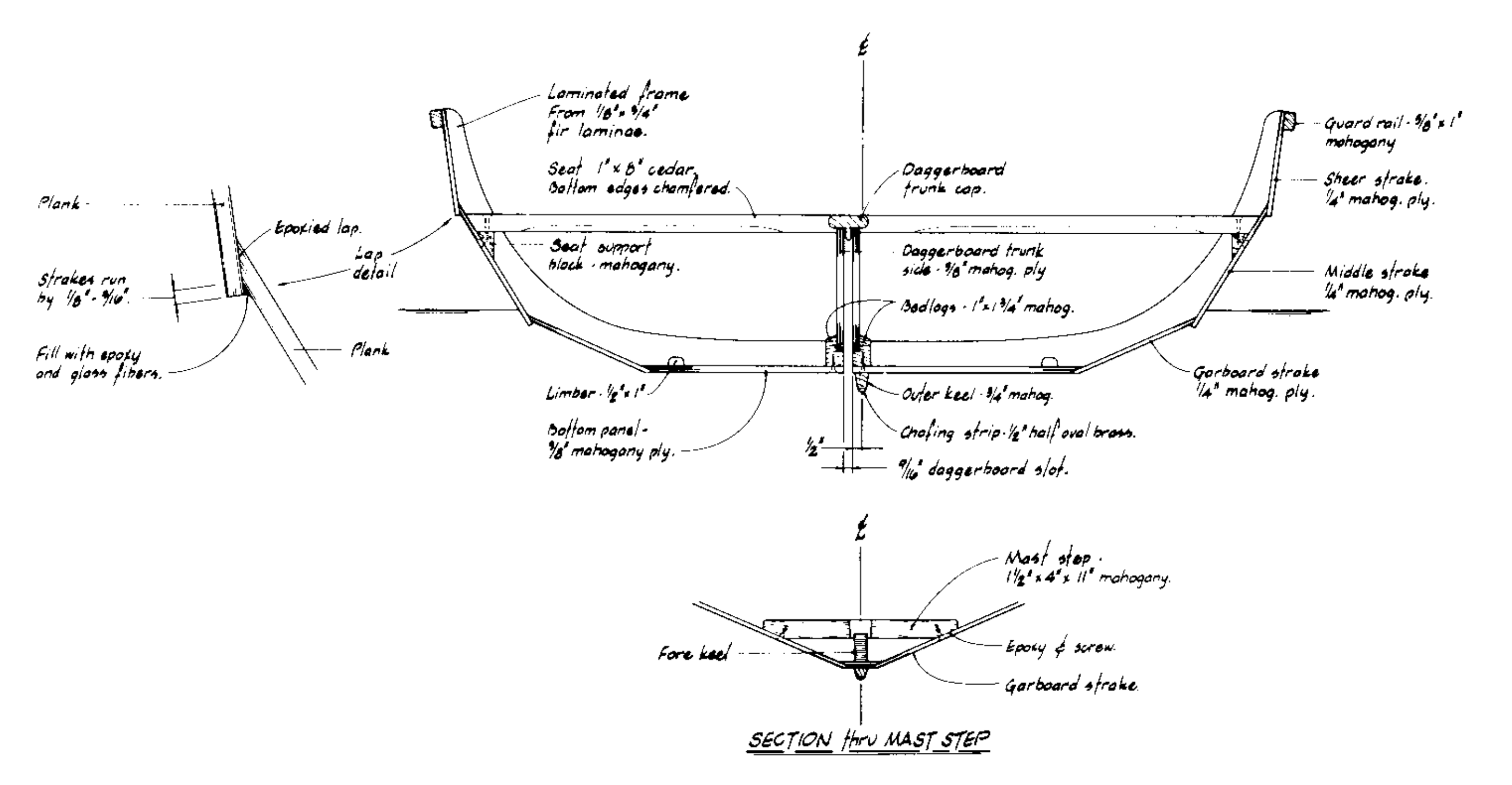
Plans Redrawn for Publication by Dave Dillion
The Nutshell Pram is planked upside down on a building jig. Consisting of only 22 wooden parts (Rowing model), the design was a natural for a kit, and WoodenBoat first offered her as a complete kit boat, one of the most attractive and best performing for her size of any we’ve seen. (The Nutshell Pram Kit is still available in a Rowing Model for $700, and in a Sailing Model for $895, freight collect.)
In WoodenBoat No. 60, we ran a “how-to-build” article on the Nutshell, and we now offer a plans package for those who prefer to furnish their own material. Plans for the Nutshell Sailing Pram consist of eight sheets, including building jig details, template sheet, scaled plank patterns, patterns for structural members, and construction details. A how-to build manual and video can be purchased separately. WB Plan No. 41. $75.
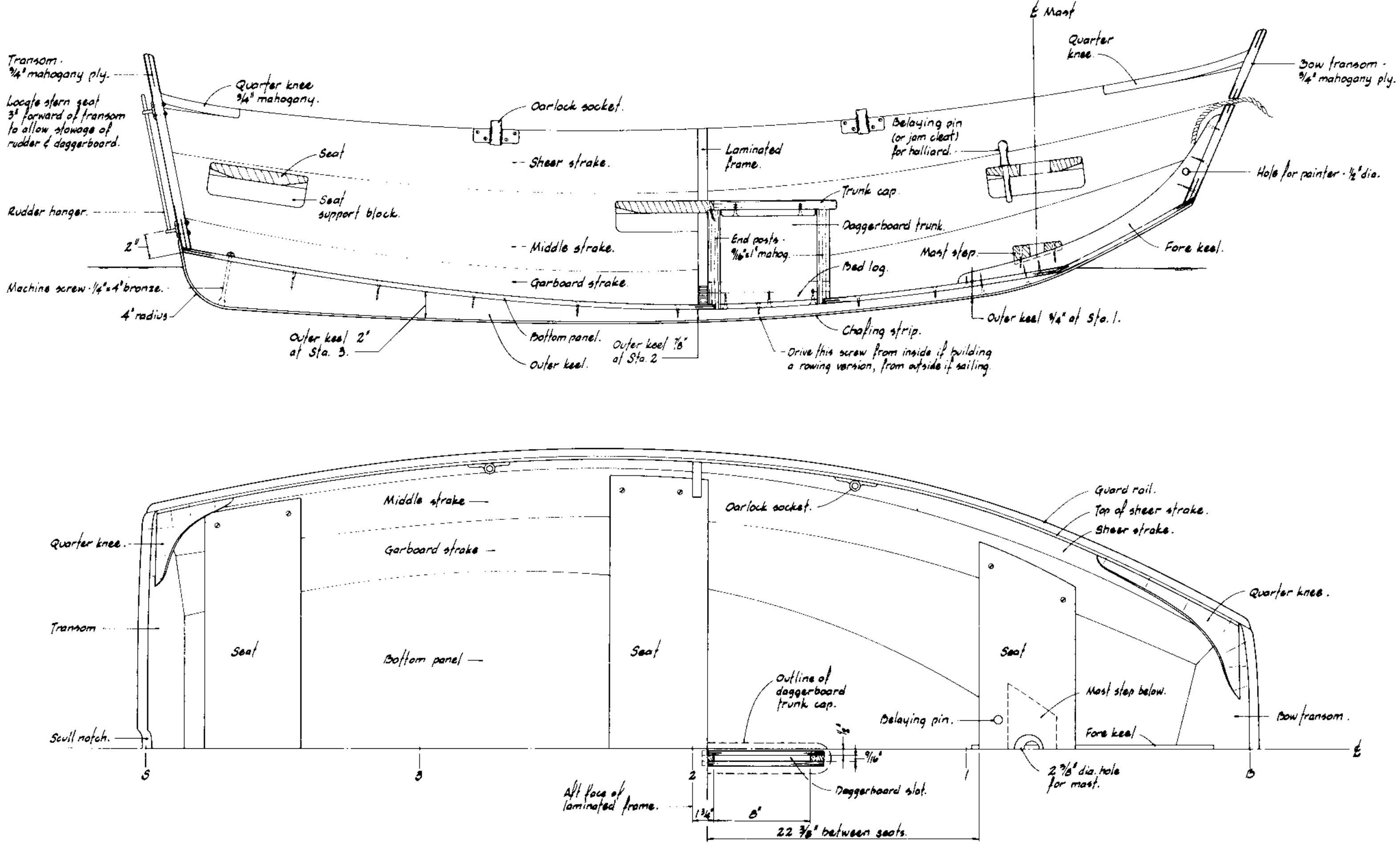
Construction Plans
Completed 7′ 7″ Nutshell Sailing Pram Images
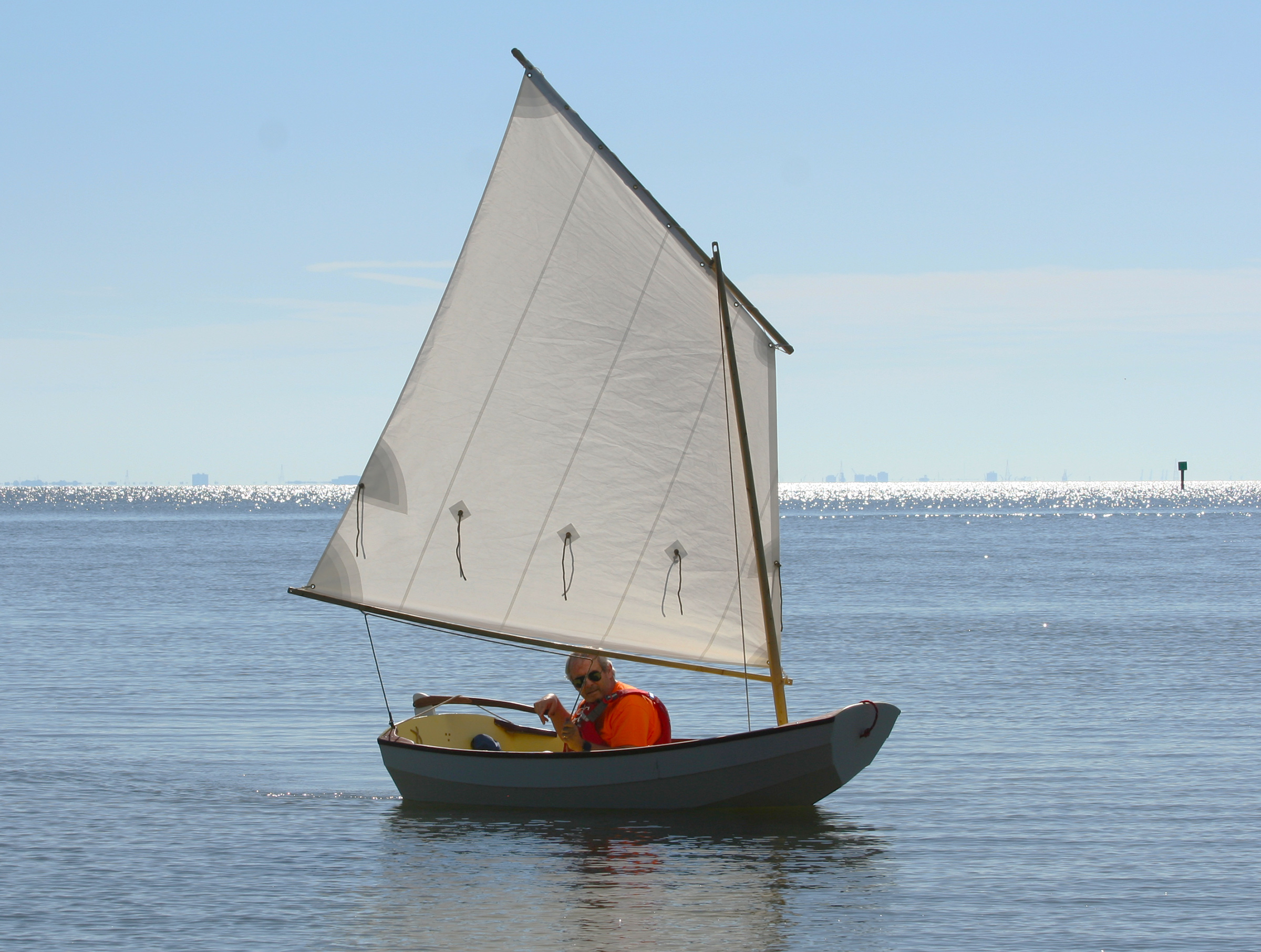 Photo by Audrey and Kent Lewis
Photo by Audrey and Kent LewisThis Nutshell’s sail has a row of reef points, described in Maynard Bray’s book as “a prudent step.” He also advises “Hold the sheet; don’t belay it. Being able to instantly let it go in a puff will avoid a capsize.”
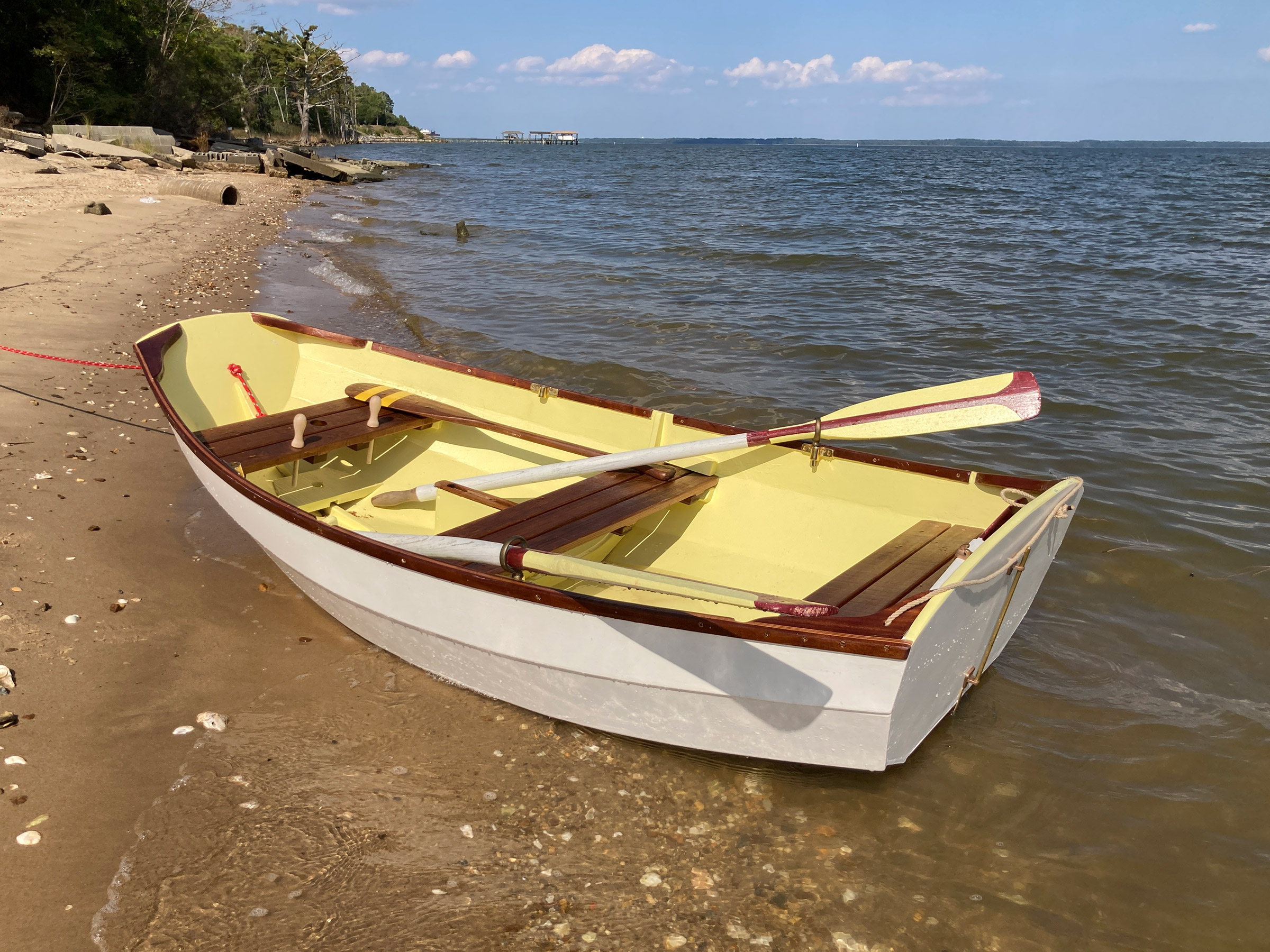 Photo by Audrey and Kent Lewis
Photo by Audrey and Kent Lewis The belaying pins on the forward thwart serve to belay the halyard. While they may seem more sentimental than practical, when properly used, they can be pulled in an instant to drop the sail. And unlike cleats screwed in place, they can be removed to clear the thwart for rowing. For builders who don’t have a lathe, they’re available for purchase. The function of the long pintle on the transom is explained in this article by Kent and Audrey Lewis.
 Photo by Audrey and Kent Lewis
Photo by Audrey and Kent LewisFor rowing, the daggerboard, rudder, and tiller fit neatly behind the aft thwart. The lug sail can be rolled up around the spars and laid in the boat; the 8’ 3” mast will extend past the transom.
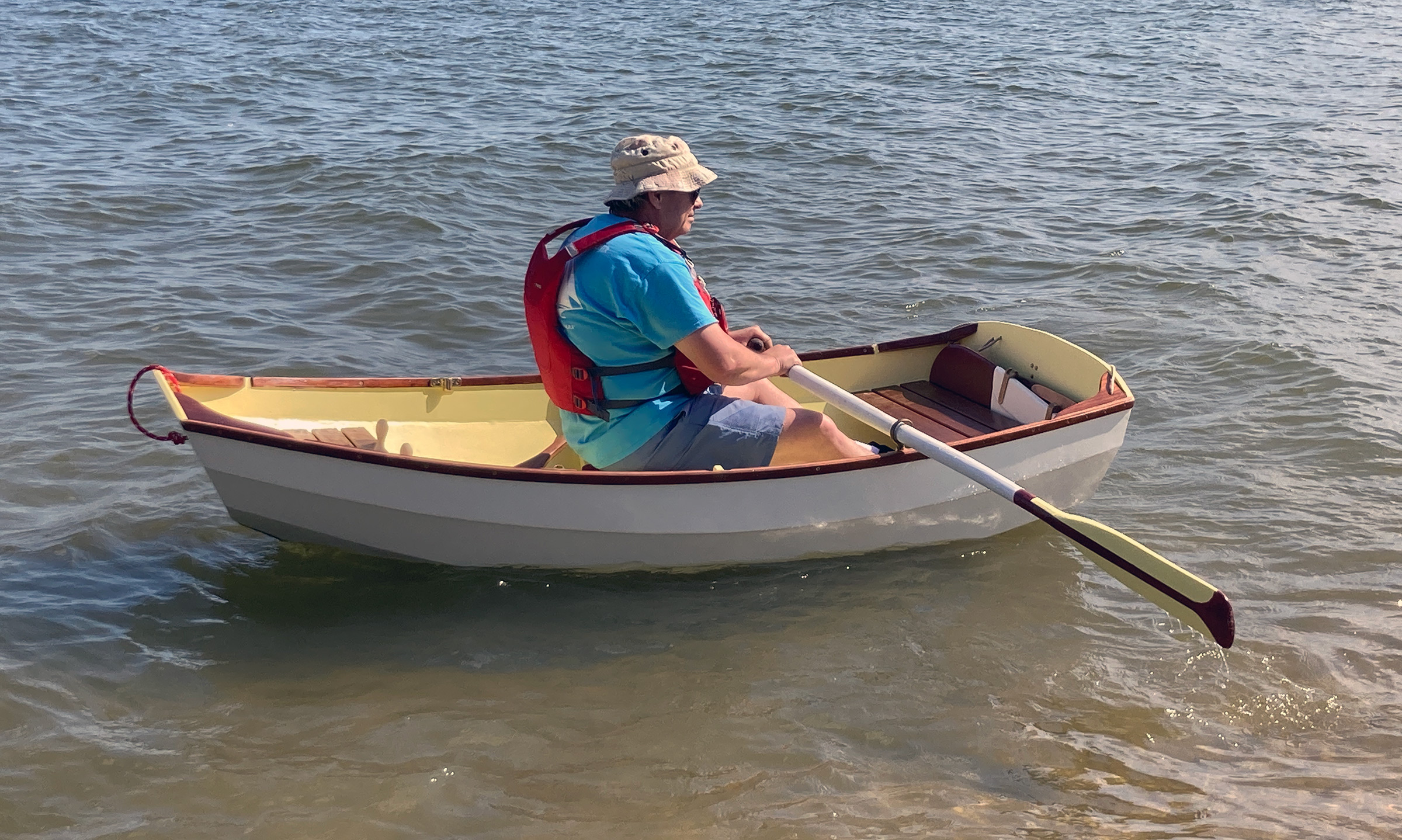 Photo by Audrey and Kent Lewis
Photo by Audrey and Kent LewisWith a single occupant aboard, the Nutshell sits with the bow transom clear of the water without a lot of overhang shortening the hull’s waterline.
Installing the Rudder of a Nutshell Pram
The Nutshell’s split gudgeon rudder hardware employs a single 11 7⁄8″-long brass pintle and places both gudgeons on the rudder. The split gudgeon has overlapping top and bottom bronze “hooks,” similar in shape to open fairleads.
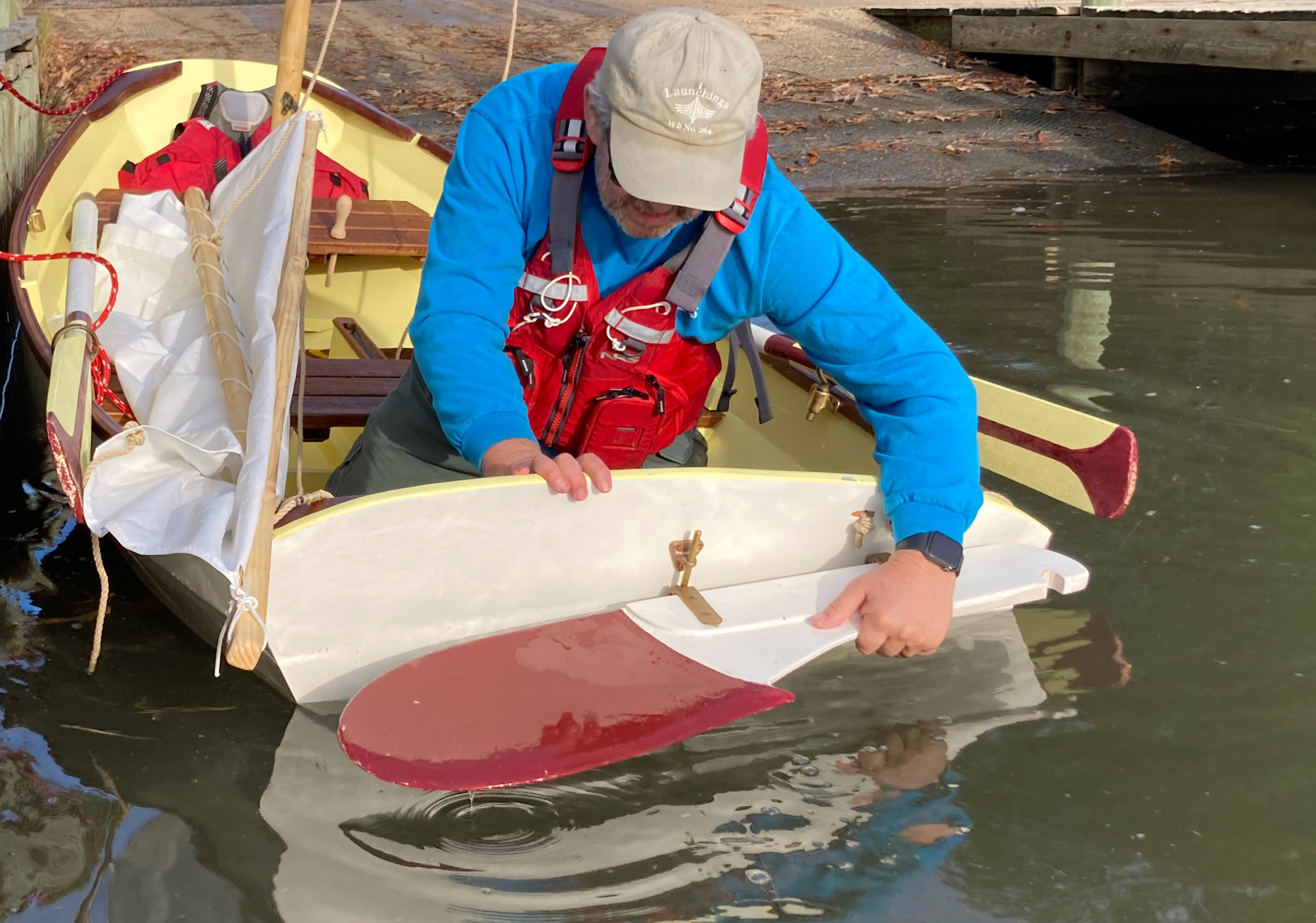 Photo by Audrey and Kent Lewis
Photo by Audrey and Kent LewisStep 1: Hold the rudder perpendicular to the transom and slide the lower gudgeon onto the pintle.
 Photo by Audrey and Kent Lewis
Photo by Audrey and Kent LewisStep 2: Bring the rudder to vertical. The hooks of the lower gudgeon will grab hold and the rudder can be slid down until the upper, conventional gudgeon engages with the top of the pintle.
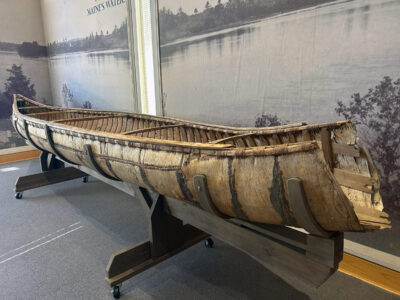
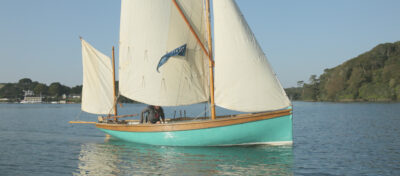
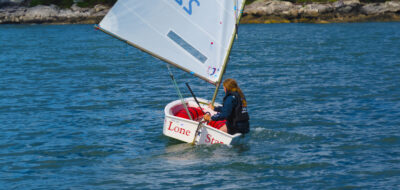
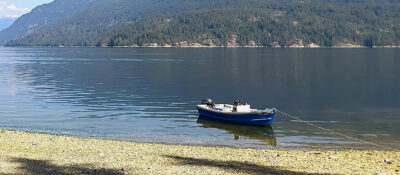
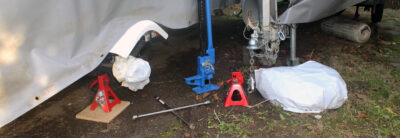
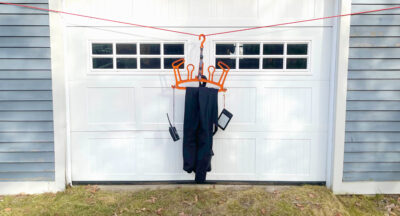
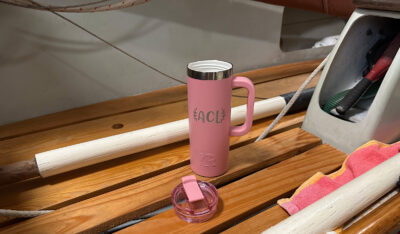
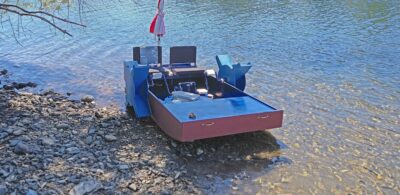
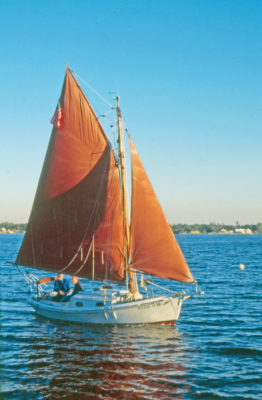
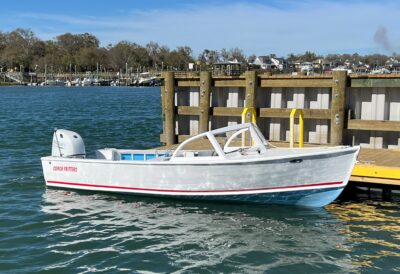
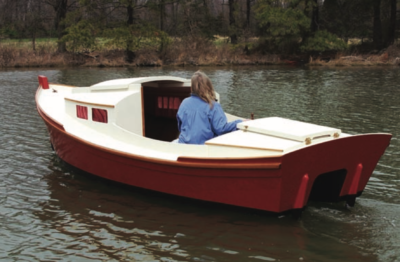
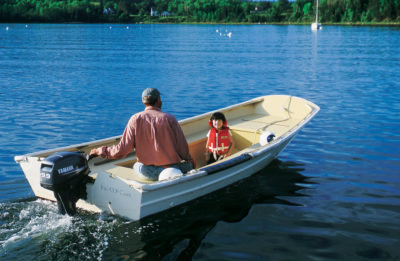
Excellent dinghy. I have build Oughtred’s version of this. Does someone know what year the Nutshell Pram was designed?
I believe in or around 1982. I have the plans for its 9′ 6″ sister, still waiting for me to get off my butt and build it.